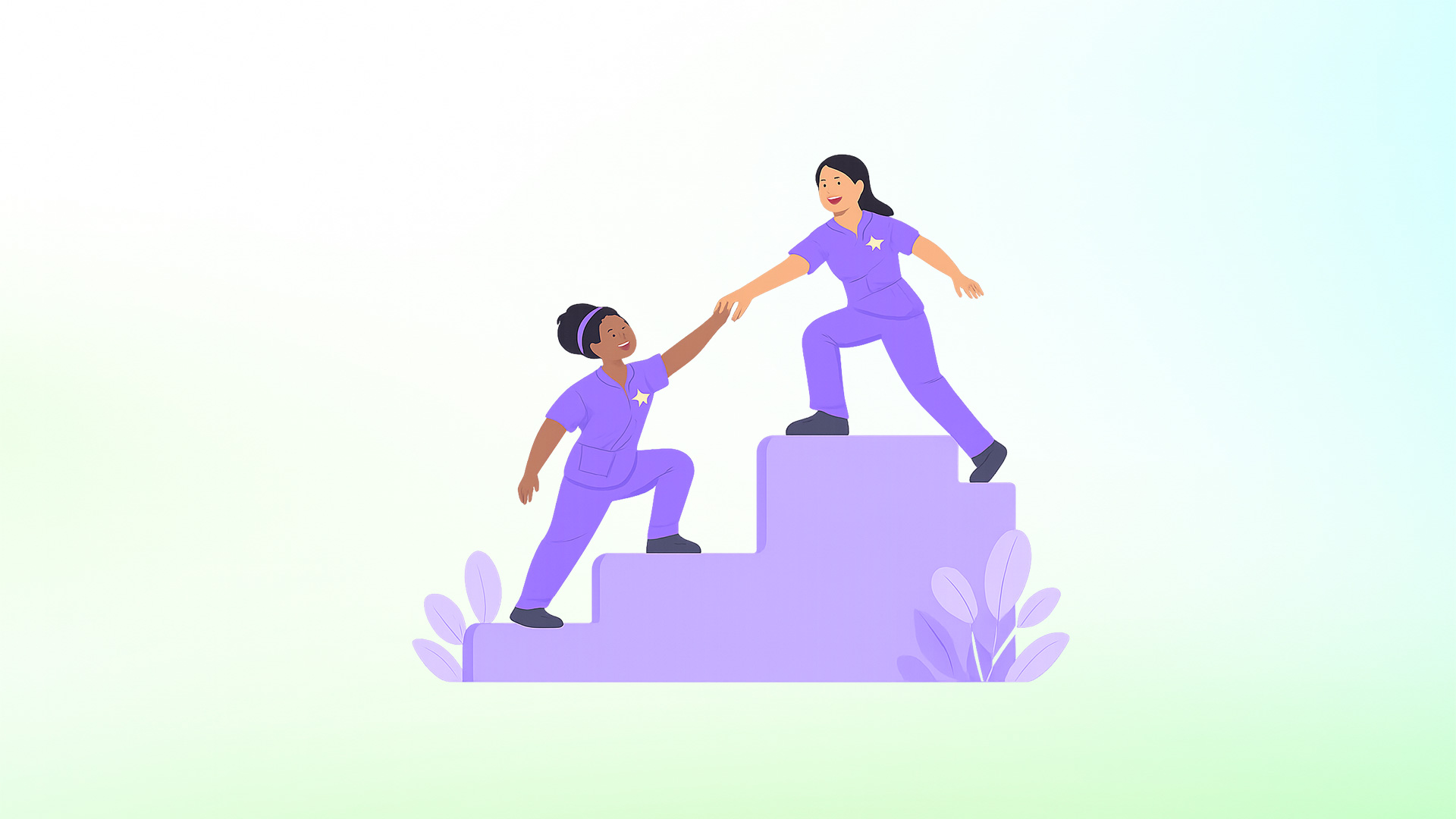Finding the perfect resource to enhance your journey as a nurse practitioner (NP), whether you are an experienced professional or one of the many aspiring nurse practitioners, can feel overwhelming with the sheer number of options available.
That’s why we’ve created this curated list of blogs, podcasts, YouTube channels and more that are must-follows in 2025. Whether you’re looking for educational resources, career advice, or just a dose of inspiration and entertainment, these picks are sure to meet your needs.
At NPHub, we’re all about supporting NPs and NP students, not just through our services but by pointing you to the best resources out there.
Our nurse practitioner blog serves as a platform for discussing news and topics important to advanced practice nurses and primary care clinicians. Let’s dive into our updated recommendations for blogs, podcasts, and YouTube channels.
Nurse Practitioner Blogs
If you prefer reading articles that dive deep into a subject, these five blogs are perfect for NP students and practicing professionals.
Nurse.org
Beyond job postings and career advice, Nurse.org features a constantly updated blog that’s rich in news, stories, and educational content tailored to nurses and nurse practitioners. A one-stop hub for relevant, timely insights.
Yoga Nurse
Annette Tersigni’s blog is a blend of nursing and wellness through yoga practices. As stress continues to impact healthcare professionals, her practical advice on creating a stress-free environment is invaluable.
Off the Charts
Published by the American Journal of Nursing, this blog offers articles ranging from clinical tips to policy changes affecting the healthcare world. It’s a reliable resource for staying informed about the latest in nursing.
FreshRN
Kati Kleber’s blog provides actionable advice and guidance for nurses, including NP-specific tips. From navigating your first job to dealing with burnout, this blog has something for every stage of your career.
The Nerdy Nurse
Brittney Wilson’s quirky blog combines nursing, technology, and lifestyle content. Whether it’s tech tools to make your job easier or lighthearted reflections on nursing life, you’ll leave her site feeling both informed and entertained.
Podcasts for Nurse Practitioners
Podcasts offer a convenient way to learn and stay entertained during your commutes, workouts, or breaks. Here are our 2025 picks for the top NP-related podcasts.
The Nurse Practitioner Podcast
Produced by The Nurse Practitioner Journal, this podcast is packed with concise episodes covering clinical topics, professional insights, and emerging trends in healthcare. It serves as a valuable resource for advanced practice nurses, providing critical information and advocacy efforts.
Primary Care RAP
This podcast delivers monthly episodes filled with high-yield, entertaining content on primary care topics. Perfect for staying current without feeling overwhelmed.
Good Nurse Bad Nurse
Host Tina Vinsant pairs true crime with nursing stories, presenting a “good case” and a “bad case” in each episode. Engaging and educational, this podcast is a fan favorite.
Nursing Uncensored
Adrianne Behning’s unfiltered take on nursing life blends humor, honesty, and valuable insights. The podcast covers everything from nursing school survival to career growth.
Nurse Keith’s Podcast
Keith Carlson brings decades of experience to his podcast, which blends career advice, healthcare discussions, and interviews with leaders in the field. It features interviews with nationally recognized health experts who share valuable insights on various health topics. A treasure trove of professional growth strategies.
These platforms offer strategies for career advancement, helping those in the nursing profession to stay competitive in the job market. Whether you’re looking to climb the career ladder or simply stay informed about industry trends, these blogs provide the guidance and knowledge you need to succeed.
YouTube Channels for Nurse Practitioners
For visual learners, YouTube channels are an excellent resource. These six channels provide educational, entertaining, and motivational content for NPs.
Nurse Blake
Known for his humorous take on nursing life, Nurse Blake’s channel is both entertaining and relatable. His parodies and personal stories resonate with nurses everywhere.
RegisteredNurseRN
With videos on everything from NCLEX prep to advanced nursing skills, this channel is a goldmine for students and professionals alike. It’s one of the most popular nursing channels for a reason.
MEDCram
Dr. Roger Seheult breaks down complex medical concepts with clarity. Whether you’re tackling difficult coursework or brushing up on clinical knowledge, MEDCram is an invaluable resource.
The Nurse Nook
Alexis Nicole’s cozy vlogs cover everything from study tips to self-care routines. Her relatable content is perfect for those balancing nursing school and life.
Valery Nunez
Valery’s channel offers relatable insights and tips from her journey as a pediatric nurse mix with her daily life, perfect for nurse practitioners seeking inspiration and real-world advice.
The Resilient Nurse
by Johns Hopkins School of Nursing offers practical tools and insights to help nurses build resilience and thrive. Hosted by Nancy Reller, episodes explore topics like managing burnout, fostering meaningful recognition, and overcoming incivility.

Bonus Resources from NPHub
In addition to these great external resources, don’t forget to explore our very own content.
NPHub Blog
Find articles tailored to NP students, covering everything from clinical placement tips to career advice. The blog also provides guidance and resources specifically aimed at new nurse practitioners, helping them navigate their first year in practice.
NPHub YouTube Channel
Dive into video content on NP education, preceptorship tips, and more.
Healthcare Heroes Podcast
Hosted by our CEO Krish Chopra, this podcast spotlights inspiring stories from healthcare professionals across the industry. It also features episodes focused on empowering elite nurse practitioners through practical advice and resources for achieving financial independence and successful practice management.
Now, we know you came here for blogs, podcasts, and YouTube channels, but we couldn’t resist sharing a few bonus resources to make your NP journey even smoother. Check these out:
Continuing Education resources: Keep learning, stay ahead
Staying up-to-date with the latest clinical information and best practices is essential for nurse practitioners. Continuing education resources are crucial for advancing nursing practice and ensuring nurse practitioners are well-equipped to provide the highest standard of care.
Blogs like APEA and The NP Insider offer a wealth of resources for NP students and practicing professionals.
From exam prep to continuing education and clinical information, these platforms provide the tools needed to advance your education and career. By offering comprehensive and accessible resources, these ensure that nurse practitioners are well-equipped to provide the highest standard of care.
As an NP, maintaining your education isn’t just a requirement—it’s the key to staying at the forefront of patient care. These platforms make it simple to earn CE credits while expanding your expertise:
NurseCE4Less
Affordable, accredited, and packed with a wide variety of CE topics, this platform is designed with busy professionals in mind. Whether you need specialty-focused credits or general refreshers, NurseCE4Less delivers high-quality courses at your pace.
Medscape CE
Medscape offers free, evidence-based CE courses that integrate seamlessly with your day-to-day practice. Topics range from updates on primary care protocols to advanced treatments in specialty areas. Plus, it’s accessible anywhere—perfect for multitasking NPs.
NetCE
Self-paced, convenient, and user-friendly, NetCE is ideal for tackling CE requirements on your schedule. Their catalog covers everything from ethics and pain management to emerging public health issues.
Tech and Apps for Nurse Practitioners: Work smarter, not harder
Why work harder when the right tools can streamline your day? These tech resources are designed to save time, improve accuracy, and keep you organized in every aspect of your practice. Some of these tools are particularly useful for the traveling nurse practitioner, helping them manage schedules and stay organized while on the move:
Epocrates
This all-in-one app is like having a pocket-sized clinical advisor. Quickly check drug interactions, dosages, and disease guidelines—all in one intuitive platform. It’s an essential companion for both students and seasoned NPs.
MDCalc
Decision-making made easy! MDCalc is packed with calculators for everything from cardiac risk to renal function. It’s a must-have for making evidence-based decisions at the bedside or in the office.
NurseGrid
Created specifically for healthcare professionals, NurseGrid lets you manage schedules, track shifts, and sync with colleagues—all in an easy-to-use app. Say goodbye to spreadsheet chaos and hello to organization!
Books to recharge and inspire yourself
From Classroom to Clinician by John Stangl
This is a must-read for new nurse practitioners transitioning into clinical practice. It offers practical advice on job hunting, enhancing clinical skills, managing risk, and improving patient communication.
The Ultimate Nursing School Study Guide by Nurse Sugar
is an all-in-one resource for mastering nursing essentials, perfect for NPs looking to revisit foundational concepts or support their ongoing learning
Self-Care for Nurses: 100+ Ways to Rest, Reset, and Feel Your Best by Eris D. Stevenson
This practical guide is real and aimed at providing quick, actionable self-care tips for busy nurses. It focuses on reducing burnout and promoting well-being.
The Rebel Nurse Handbook: Inspirational Stories by Shift Disruptors by Rebecca Love and Leanne Meier
This book is verified and widely praised for its collection of inspiring stories from nurses innovating in healthcare.
Being Mortal: Medicine and What Matters in the End by Atul Gawande
This book is a must-read for healthcare professionals, nurse practitioners and anyone navigating difficult conversations about aging or terminal illness.
💡 Self-Care Reminder: Schedule time for yourself like you schedule shifts—non-negotiable and essential for peak performance.
Final thoughts: Empower your Nurse Practitioner journey
Navigating the path to becoming or thriving as a nurse practitioner can be challenging, but with these resources, it’s more than achievable—it’s empowering.
Whether you’re preparing for clinical placements, tackling continuing education, or seeking a mental reset, these platforms have your back.
At NPHub, we understand how important it is to feel supported at every step. That’s why we not only connect you with experienced preceptors but also ensure you have access to a wealth of resources that align with your goals.
Bookmark this guide, share it with your fellow NP students, and remember: every step you take brings you closer to making an even greater impact in healthcare!
Find a preceptor who cares with NPHub
Book a rotation.webp)








.webp)


.webp)



.webp)